Beautiful green countryside, a fascinating ancient city, grand stately homes and crumbling castles – Cheshire has it all. We take a tour through a county rich in history and heritage.
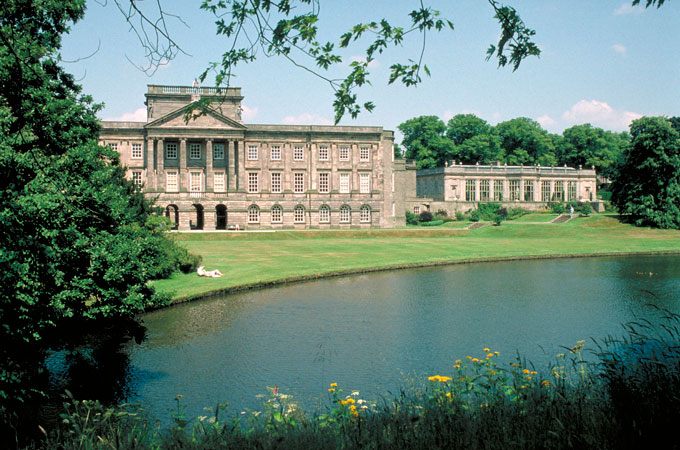
“Cheshire”, said Celia Fiennes, doyenne of 17th century lady travellers, “is pretty rich country”. Pretty indeed, with gently rolling countryside studded with picturesque villages; and wealthy too, with a plain of fertile pastureland yielding up to crops and dairy farming (and producing all that famous Cheshire Cheese). This is the county after all, whose symbol is a cat grinning with self-satisfied contentment.
Perhaps the best place to get a feel for Cheshire’s green and pleasant land is the view from Shining Tor, one of the highest points in a generally serenely level county (the Tor is located in the east of the county, in Cheshire’s share of the Peak District). From here, one can see from the industrial cityscape of Manchester; in Victorian times wealth seeped from the city as magnates, flush with the success of King Cotton, built imposing villas in the lush Cheshire countryside, far away from the dirt of the industrial revolution. The panorama takes in Cheshire’s serene plain, bounded by Delamere Forest to the south and dotted with towns and villages. On a clear day one can see to North Wales and even Snowdonia.
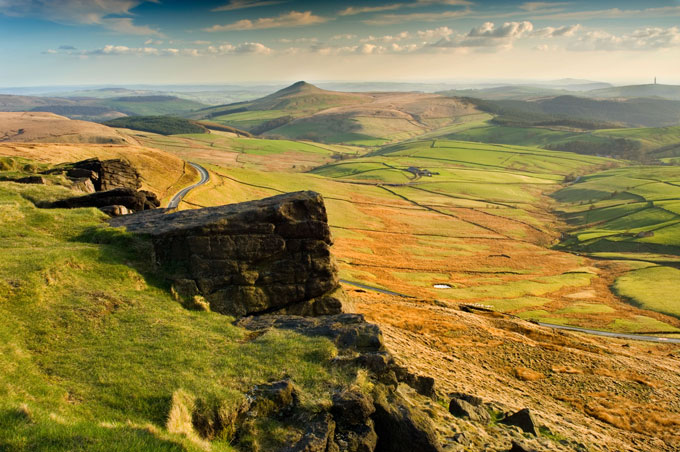
Cheshire’s past is as rich and gentle as its countryside, and yet while its reputation lacks the drama of some of its northern neighbours, there are few bloodcurdling events to spice things up a bit. Take one of the earliest archeologically significant finds in the region, that of a ‘bog body’ at Lindow Moss, near Wilmslow. Now preserved as a site of great scientific interest, the peat bog at Lindow would have been a desolate, out-of-the-way place, haunted by spirits and gods, the perfect place for Lindow Man to meet his sacrificial end. Nicknamed ‘Pete Marsh’, the body is thought to be that of a warrior or other important person from the 1st century AD, due to his well-manicured hands and other signs of well-being. The aristocrat was to be a ritual victim of a pre-Christian cult; after consuming a last supper of charred bread, he was garrotted, hit on the head and had his throat cut, and was then placed face down in the Moss, naked except for a fox-fur armband. His chilling end is still an important source of information about the tribes in Cheshire, and Britain, at the time.
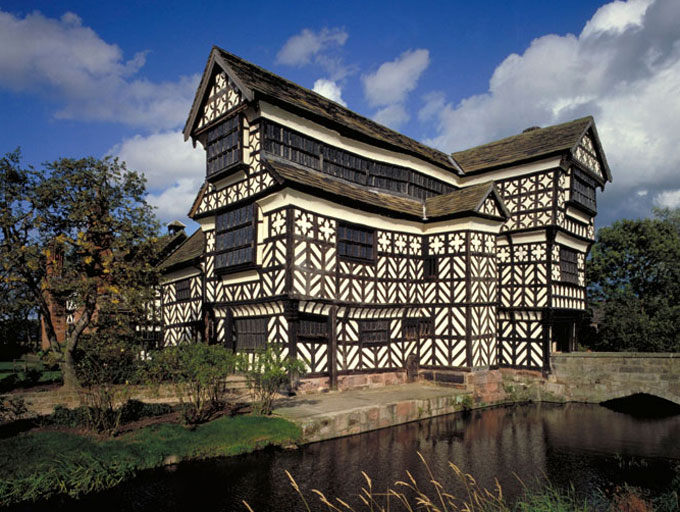
Perhaps the most famous historical incursion into Cheshire is that of the Romans. According to Ptolemy, by 70AD the incomers had founded Deva Vitrix (now Chester), the largest Roman fort in Britain. As a result the city of Chester is a must-visit for Roman-period buffs and general history enthusiasts alike. Pick up a map from the tourist office and start by walking the city’s ancient walls for views of the city and across into North Wales.
The next flash of drama in Cheshire’s history is that of the Norman invasion, which was fiercely resisted by the Saxon folk of Cheshire. This is shown by the many references to wasta, or wastelands, in the county’s entry for the Domesday Book, probably destroyed by fighting during 1066 and thereafter. Chester, as a place of immense strategic importance, was especially badly affected, with much of the post-Roman city sacked and destroyed. To control the fractious county William I built a castle on the River Dee and set about repairing the old Roman Walls, making Chester one of the strongest cities in the whole of England. From here, Cheshire was ruled by the newly-made Earl of Chester Hugh d’Avranches, or Hugh the Wolf, and his near-complete autonomy from the throne lead to the county being declared a Palatinate from this time forward, a title it still holds today.
The medieval period saw the flowering of many of Cheshire’s pretty market towns. Frodsham, for example, dates from the 13th century, and still holds a market to this day. The town also lies at the start of the 30-mile Sandstone Trail, a fine long-distance walk. Another major Cheshire export at the time was salt; with Britain’s only working salt mine still to be found at Winsford. The white stuff has been valued since Roman times, and Nantwich, one of Cheshire’s ‘three Wichs’ or salt towns, had its importance recognised in 1283 when King Edward I granted it the right to hold an annual fair around St Bartholomew’s Day. Today, Nantwich’s streets are lined with Elizabethan houses and the spirit of the medieval fair has transmuted into a passion for festivals, with events devoted to poetry, jazz, transport, beer, food and drink and of course the International Cheese Show all being calendar highlights.
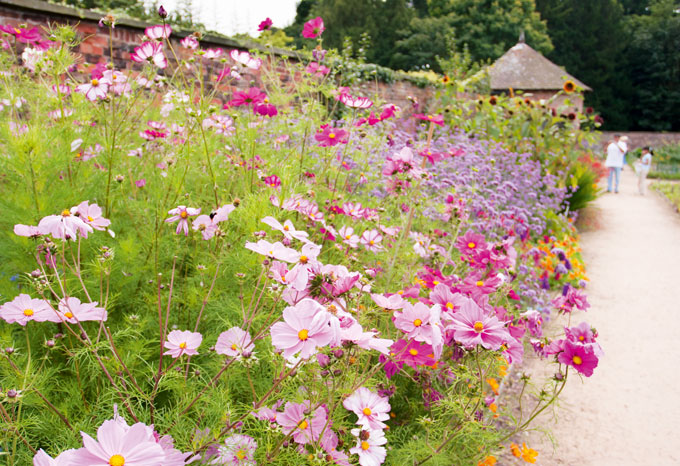
Cheshire’s medieval period also saw the building of castles, most notable being Beeston Castle, its strategic hilltop vantage point gazing towards the truculent Welsh borders. Traces of an Iron-Age hill fort have been all but obliterated by the thirteenth-century ruins that now occupy the site. After a period of neglect, the castle came into its own during the Civil War, when it was occupied by Parliamentary troops and then taken by the Royalists, who (with the help of an insider) sent nine covert troops to steal inside the bailey one night, taking the entire castle by surprise. A wander around these atmospheric ruins conjures up images of those desperate onslaughts and resistance, with sheer walls and a deep half-moon moat (now dry) to repel invaders. A near 400-ft well in the upper bailey is the source of the castle’s most enduring legend, which claims that Richard II hid valuable treasure deep within. Searches were made in 1842 and 1935 for the hoard but no treasure has ever been found – yet. Close by is Peckforton, at 19th century imitation of a medieval fortress. It is worth a visit for its even more stunning views, and while not being the genuine article that Beeston can claim to be, has a fair stab at recreating medieval life.
Tudor times were a relatively serene stretch in history’s great river for Cheshire. This allowed for the building of many of the iconic black-and-white timbered houses which are so emblematic of the period. Perhaps the best of these is Little Moreton Hall in Congleton. This fairytale house is a charmingly hotchpotch assortment of crooked beams and cobbled courtyards. Many old shoes and boots were found secreted in the structure of the building, thought to have been placed there to ward of ghosts and demons.
Another fine Tudor relic is that of Alan Garner’s Toad Hall. The name is thought to be a corruption of The Old Hall and, while more ramshackle than Little Moreton Hall, there is much to fascinate in this restoration, with its adjoining Old Medicine House. Garner is also particularly admired as an author for both children and adults (see below) and is a passionate advocate of Cheshire and its rural traditions. Check ahead with the Blackden Trust for events and opening times.
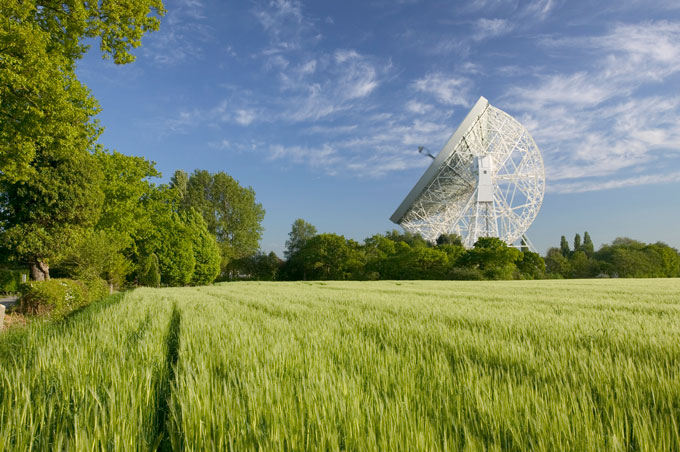
Our tour through history moves forward to the 19th century in the pretty town of Knutsford, famed as the inspiration for Mrs Gaskell’s Cranford, where memorable scenes of small town Victorian life are captured with the author’s gentle humour and affection as well as social purpose (contemporary admirers included Charles Dickens). Mrs Gaskell would have cast her novelist’s eye along the bustling main thoroughfares of Knutsford, Princes Street and King Street (known locally as ‘Top’ and ‘Bottom’) as well as Legh Road, which has garnered the nickname of ‘millionaire’s row’ for the wealth of its residents. Although she was not alive to see them built, Mrs Gaskell would have no doubt been entertained by the flurry of Italianate buildings to be found on this charming road, each one designed by Richard Harding Watt, who drew inspiration from his travels around the Mediterranean. Perhaps she would have agreed with Pevsner, who dubbed this stretch of Legh Road ‘the maddest sequence of villas in all England’.
Visitors might like to call at the Knutsford Heritage Centre to pick up a copy of the Town Trail (following the Museum on the Streets plaques dotted around town) and admire the Millennium Tapestry. Cheshire’s answer to Bayeux was created to commemorate the turn of the millennium and depicts the quaint streets of Knutsford and many of its residents. Also on display is memorabilia from the town’s Rose Queen Festival. Those with an interest in old English customs will be fascinated by the ritual of sanding, where streets are swept clean and sprinkled with patterns of red and white sand to mark the arrival of an honoured guest (such as Princess Victoria in 1832, who noted the displays in her diary). Mrs Gaskell was especially touched when nearly every house in the town sanded for her wedding at the parish church. The author is buried in Brook St Chapel, and there is a small exhibition here explaining her impact on the town, and she is further commemorated by Watt’s Gaskell Memorial Tower on King Street.
Handily located on Knutsford’s doorstep is Tatton Park, a wonderful assortment of parkland, gardens and stately home. The original Old Hall was built by the notorious Stanley family and ownership of the estate passed to the Egerton family in 1598, when it was purchased by the Lord Chancellor of England.
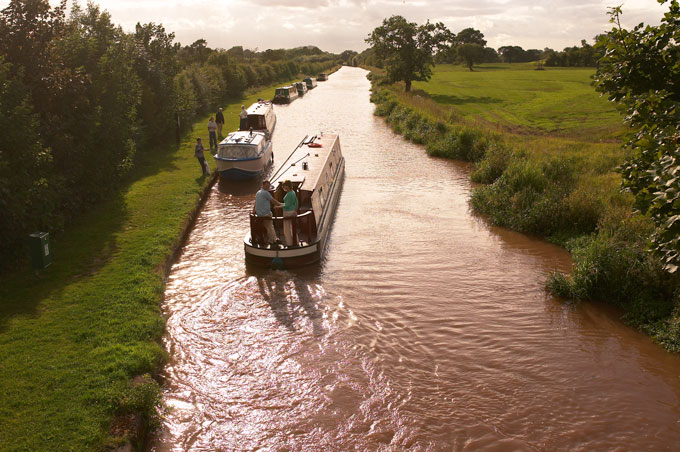
Approached through parkland teeming with deer, the imposing Neo-Classical mansion was designed by the architects Samuel and William Lewis Wyatt, and houses a magnificent collection of furniture, ceramics and masterpieces by Guercino and Canaletto. The cellars and kitchens reveal the behind-the-scenes toil which went into keeping the splendid facade alive, while Home Farm provides an even earthier introduction into how some of the needs of the big house were supplied. Jewel of the crown is the wonderful gardens, with the famous Japanese Garden providing a haven of tranquillity.
Literary fans can get a final hit at Lyme Park, near the village of Disley. This Grade I listed building is Cheshire’s largest stately home and was the setting for the exteriors of Pemberley in the BBC adaptation of Pride and Prejudice, most memorable for the Mr Darcy’s impromptu lake swim. Even those who do not swoon at the thought of a dripping Colin Firth will find plenty to admire in this beautiful house with its Dutch garden, romantic orangerie and 550-hectare deer park.
Many think of Cheshire solely in terms of its agriculture and pretty market towns, but an alternative view of Victorian-era Cheshire is supplied by the county’s less well-known industrial past. Most notable is the silk manufacture that took place in Macclesfield, where many silk-weavers cottages can still be found, as well as the Silk Museum and Paradise Mill. There are also mills at Congleton and Bollington but perhaps the most interesting testament to the textile era is Quarry Bank Mill at Styal. The mill was established by Samuel Greg in 1784 but, unusually for the times, he also took a great interest in his workers’ welfare, constructing a model village with school and church in the grounds. Life was still hard though, and many a gruesome tale can be heard, especially on re-enactment days which offer a unique insight into life during the industrial revolution.
Back on Shining Tor, surveying the Cheshire Plain, the eye is drawn to an unusual white disc. This is the Lovell Radio Telescope at Jodrell Bank Observatory established by Bernard Lovell and still the third largest telescope of its kind in the world – proving that Cheshire has one eye on the stars as well as one on the more prosaic matters of life. Amending Ms. Fiennes then, Cheshire is pretty rich land, yes, but one with a surprise up its silken sleeve, wherever you look.

Editor’s picks
Chester’s historic city centre
Chester is one of Cheshire’s big draws, and no wonder, with its mix of historical significance, quaint pubs and eateries and more glamorous nightlife options. Look out for the metal plaques on the walls, which bring history to life as you wander the Roman walls or medieval streets. A highlight is Chester Cathedral, which has existed in one form or another for over 1,000 years. Originally the site was a Saxon minster and shrine to St Werburgh, who gained her status as the patroness of Chester after the miraculous withdrawal of the Welsh King Gruffudd ap Llewellyn from his siege if the city, then rebuilt as a Benedictine Abbey by the Norman Earl of Chester known as Hugh the Wolf. The cathedral has an altogether more peaceful air now, but remains of the shrine can still be seen at the Lady Chapel, as well as some glorious 14-century carvings.
Chester Castle’s Military Museum
Military enthusiasts will find much of interest in Chester Castle’s Military Museum. Displays concentrate on how local soldiers found themselves in conflicts across the world, especially those of the Cheshire Regiment, which was established in an effort to resist James II’s attempt to regain his throne.
Wonderful walking
Cheshire is a walker’s paradise – contact the North and Mid-Cheshire Ramblers for details of walks suitable for all abilities. You can sample a few walks before deciding to join the group as a member.

Canal holidays
There are a large number of canals in Cheshire, a legacy of the industrial period. These make for a fabulous water-borne holiday. Visit the National Waterways Museum in Ellesmere Port for the history of these engineering marvels.
Anderton Boat Lift
The last of its kind in the world, the Anderton Boat Lift (located near the village of Anderton) is a 50-ft vertical lift built in 1871 to transport cargo boats from the River Weaver to the Trent & Mersey canal. A must-see for engineering or industrial heritage enthusiasts.
Beautiful gardens
Cheshire is perfect gardening country, as the range of beautiful gardens attests. A winter favourite is the beautiful display of snowdrops at Rode Hall. Cheshire’s Gardens of Distinction programme can be found here.
Delicious cheese
For a taste of the famous local cheese, head to The Cheese Shop in Chester which has been in operation for over 20 years; or H.S Bourne in Malpas, which has been hand-making cheese since 1930 and is still winning prizes at the Nantwich International Cheese Festival to this day.
Literary inspiration
Many will remember the magic of Alan Garner’s novels for children (he has also written for adults), which draw on Cheshire myth and legends for their otherworldly mood. Many Cheshire spots are mentioned in his works but to recreate the atmosphere from his best-loved novel, The Weirdstone of Brisingamen, visit Alderley Edge. A walk through the Edge itself (a sandstone escarpement used for copper mining) reveals the caves so central to the novel, in which it is said the Wizard of the Edge guards a cave of sleeping warriors, ready to rise up and fight for England in her gravest hour. Some variations of legend claim that the wizard is Merlin, and it is King Arthur and his men who slumber.
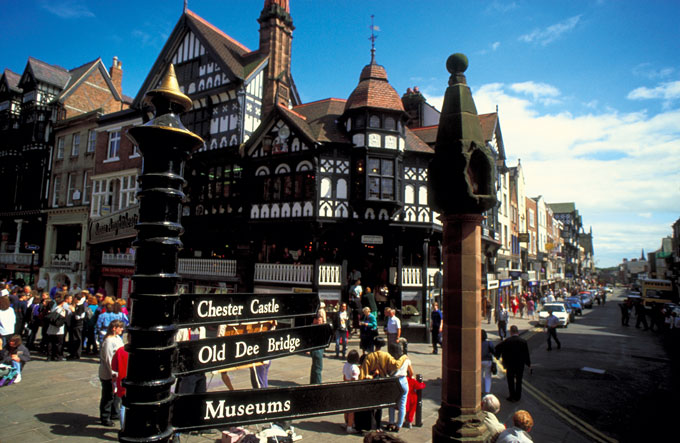
Mrs Gaskell and Alan Garner might capture differing sides of Cheshire life, but one of Cheshire’s literary sons created another world altogether. Lewis Carroll was born in Daresbury near Warrington, and the village’s All Saints church commemorates his life and work with stained-glass windows featuring scenes from Alice’s Adventures in Wonderland.
Horse racing
Chester is rightly famous for its races and the racecourse (known as the Roodee) is the oldest still in use England, with horse racing here dating back to the 16th century.
Farm shops
Rich agricultural land equals an array of amazing farm shops littered across the countryside. Recommended are Hollies or Hawerden Farm Estate Shops.
Local shows
A charming old Cheshire tradition is that of the Gooseberry Shows, held at various locations in July and August. Other more mainstream shows such as the RHS Flower Show are also held at Tatton Park and the Cheshire Show is held at Tabley near Knutsford.
Related articlesScottish gardens on a grand scale |
Click here to subscribe! |





 © 2024
© 2024